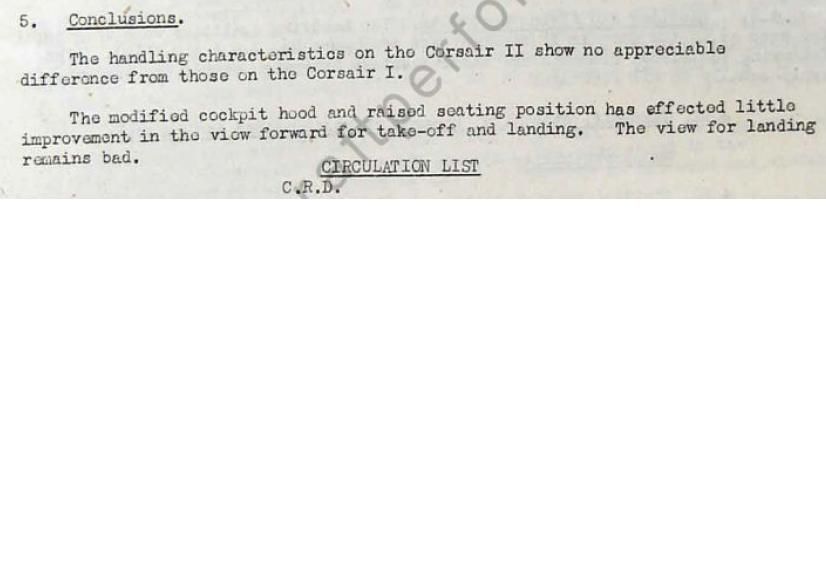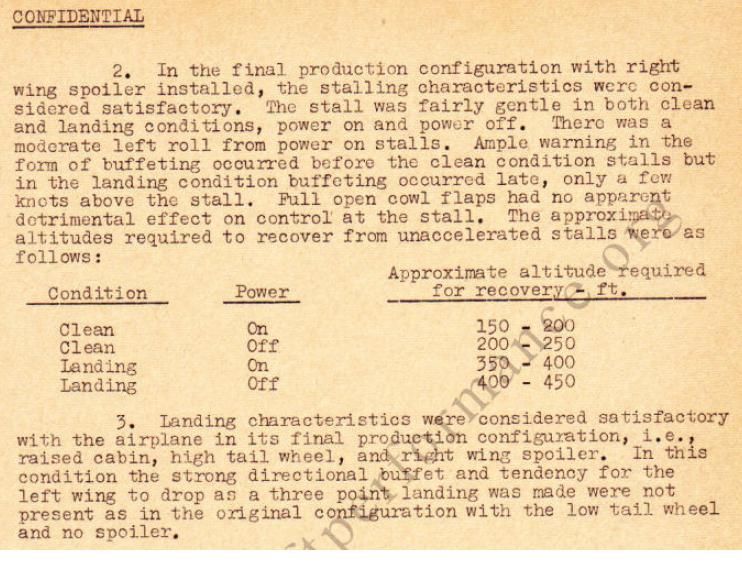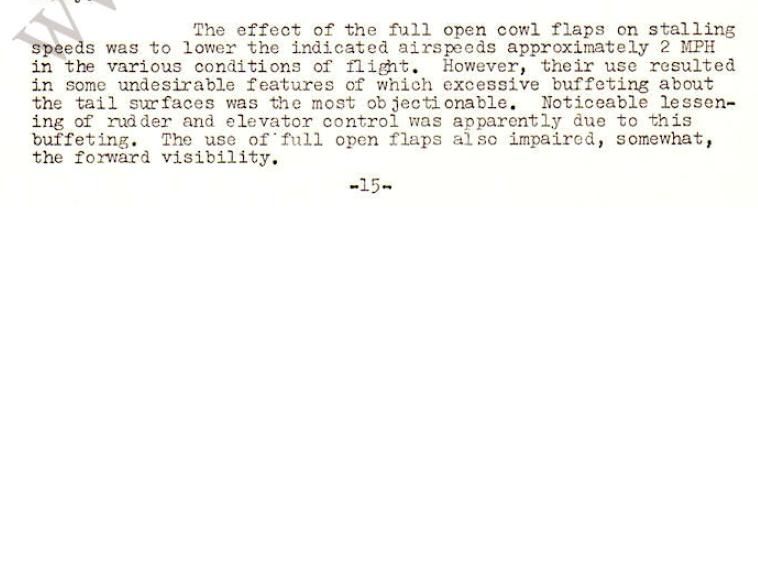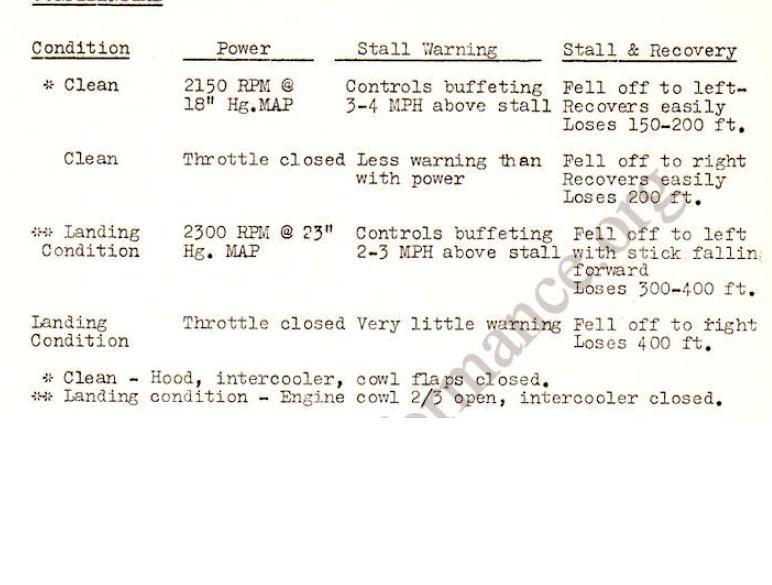<Shrug> I guess we'll just have to agree to disagree, clearly we are having a very different qualitative experience in AH. I'm not sure why that is.
I think it's because we're not running the same tests, using the same method.
We may also be looking for different answers...
I'm trying to see how closely the AH F4U stall characteristics match what is described in the training video.It looks like you're taking that further to see if you can find cases where you can make the AH stall NOT match reality, and maybe then to see if "what happens next, or as a consequence of" of those cases matches your notion of how it "should" be.
First of all, I think that jumping to "what happens next", or how the stall can be "conquered" is premature without first seeing if the "basic" stall matches up in AH vs. reality (what we see in the video, and described in test reports).
Second, I find the terminology "abusing it pretty hard" and "able to work it to the point" and "used the ailerons and rudder to keep the wings roughly level" to be descriptions of testing that goes way beyond testing "basic stall" characteristics. Again; premature at the very least, and I'd also argue this to be massively outside the testing parameters shown in the film.
Different results? I'd hope so! It sounds like you're comparing apples to asteroids.
At what altitude did you do your tests?
Yes you are right it was the wrong model. I took the early one up with 100% fuel, three notches, gear out and power off, as you suggested.
The stall speed was higher as expected and this one it felt like either wing wanted to go. In all honesty, it still felt very communicative to me.
Trouble started way after the buffet was fully set in.
I was abusing it pretty hard and was able to work it to the point were I could maintain full back pressure on the stick (yes to the stop) and used the ailerons and rudder to keep the wings roughly level.
I didn't try to fight the stall, or keep it from happening.
I didn't get the sense they were trying to keep the stall from occurring in the video. I didn't visually or audibly get the sense that the pilot was doing everything he could to NOT stall.
I
certainly didn't get the impression that the pilot was "abusing it pretty hard" and was trying to work it to the point were he could maintain full back pressure on the stick (yes to the stop) and was trying to use the ailerons and rudder to keep the wings roughly level.
Rather, I felt they were TRYING to get the plane to stall in the video, in a basic and "normal" sense, in order to show new pilots what they could expect and how to correct it once it had occurred. The easiest, most predictable and repeatable way to do that is to slow down with the wings level, and bring the stick straight back until the plane stalls.
I was simply trying to realistically recreate the stall I saw on the video, by mimicking the conditions as closely as possible.
If you're not doing the same basic thing, you're not running the same test that I am (nor are you testing what is shown in the training video).
I then repeated the test with the second model, this one seems a little less docile, but conversely responded quicker to inputs.
Admittedly, this is where things get trickier. We don't have readily available footage of the second model (I'm assuming you mean the -1A?). If we cannot reach a consensus with the more-complete evidence for the -1, I don't have much hope at all for agreeing with even less documentation.
However, based on the stall strip/spoiler improvement, we should expect to see the opposite of what you found. The stall in the -1A should be MORE docile. As far as response to control inputs, we shouldn't see any major difference. The -1 did go through numerous aileron changes though, and I'm not sure which ailerons were used on the plane in the video. For that reason, I guess maybe there could be some differences between the film and AH, but I'd expect there to be no difference between the various AH F4U's.


I didn't recheck the film to look at the cowl flaps but both the first and second model in AH have those modelled exactly the same graphically. Both the skins I have have that green paint inside. The cowl flap in line with the antiglare strip is closed on both, the other ones open (top ones at least).
The cowl flaps in AH are not functional. They are graphically modeled closed or very slightly open. I have no idea whether their effects are modeled, but based on the fact that we don't notice buffeting of the tail surfaces I would say they're not modeled.
In normal operation, full open would be used for ground cooling, 2/3 open for take-off and climb, and closed (or opened slightly if required) in flight.


In order to clarify things I think we need to more clearly delineate between the different facets of the stall.
The buffet (I'm considering this to be more or less synonymous with "warning" of an impending stall)-
I also agree that the buffet seems to begin too early, but I don't know of a way to measure that against reality. Of course I don't know, but I suspect that HTC has modeled the buffet somewhat "generically", and that it may set in at a fairly standard "speed above stall" threshold for many or maybe all fighters/planes? If so, maybe it sets in "too early" on some planes to give an accurate representation of RL? So maybe we get too much warning in the F4U (or maybe many planes?). Not sure.
Departure-
When I run the test in the manner described above (and which I believe to be the method used by the pilot in the film), I get a stall departure very similar to that shown in the training film. I'm curious to see how many others get the same result.
Recovery-
Recovery in both models even when it snapped right over I found easy, had it back in under control and upright in around two seconds (estimated).
I agree, I can also recover easily and very quickly.
However, after entering a stall as described above, I felt like it took significantly more piloting in AH to recover than I saw or heard described in the video.
Not that it was difficult, or that "prompt positive action and normal technique won't bring about normal recovery", but that the nose appeared to drop further in the training film than it does (for me) in AH. In AH the nose kind of "got stuck" rather than swinging down as far. This (I feel) results in more required control to recover than it would if the nose fell further.
Regardless, the flight tests show "easy recovery" in a clean condition, without a terrible loss of altitude (I also believe the test pilot in the film dove more than he needed to in order to recover...).
They also show a tendency to fall off on either wing (which you also found to be true in the AH model).
It looks like landing configuration with throttle closed gives the least amount of warning/buffeting (which is a condition we'd seldom see in a fight in AH); coupled with the increased buffeting and reduced effectiveness of the elevator and rudder in that condition, I wonder if we've now "pegged" the real issue that caused an occasional pilot to flip over in a stall and crash on landing?
Further, that may be another clue that the AH F4U isn't so far off... The complaints we hear over and over and over result from people flying the corsair in a non-landing config, with high throttle; nowhere near the "worst case" conditions of low, slow, low throttle, cowl flaps open that resulted in the plane being dubber the "Ensign Eliminator". I haven't seen anything that would lead me to believe POWER ON stalls with flaps deployed should be all that violent?
